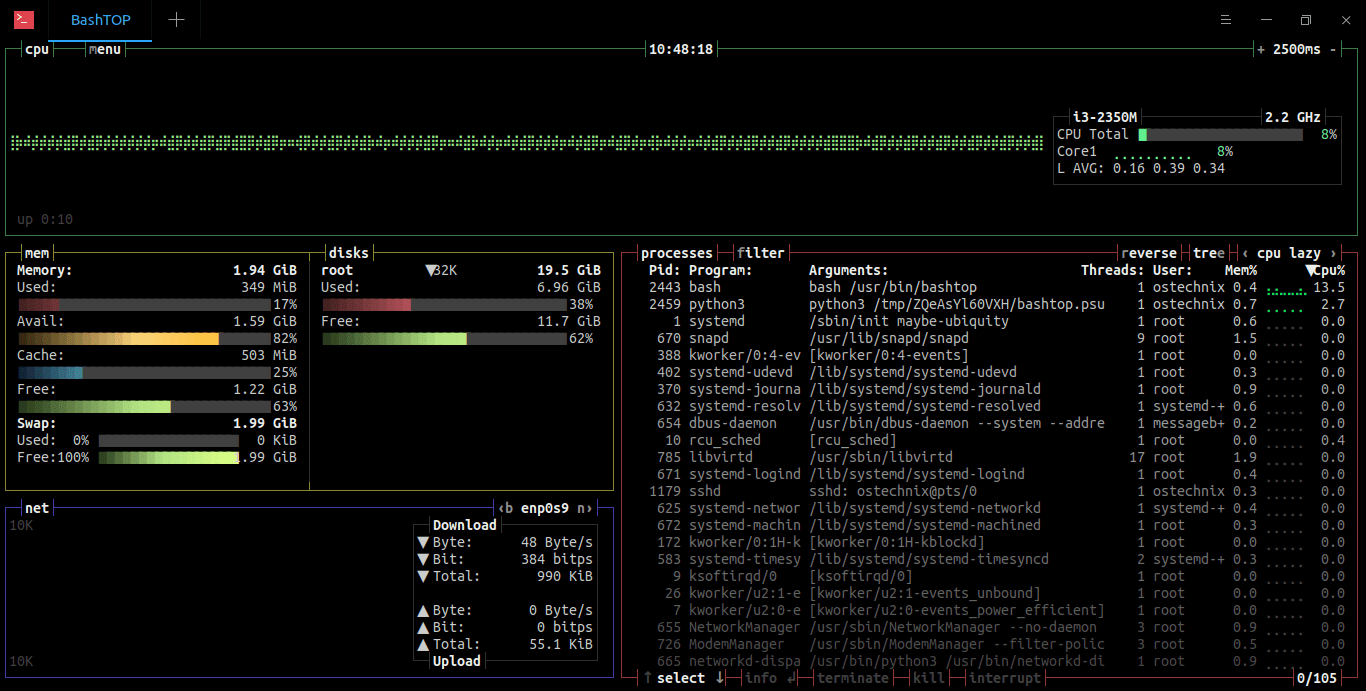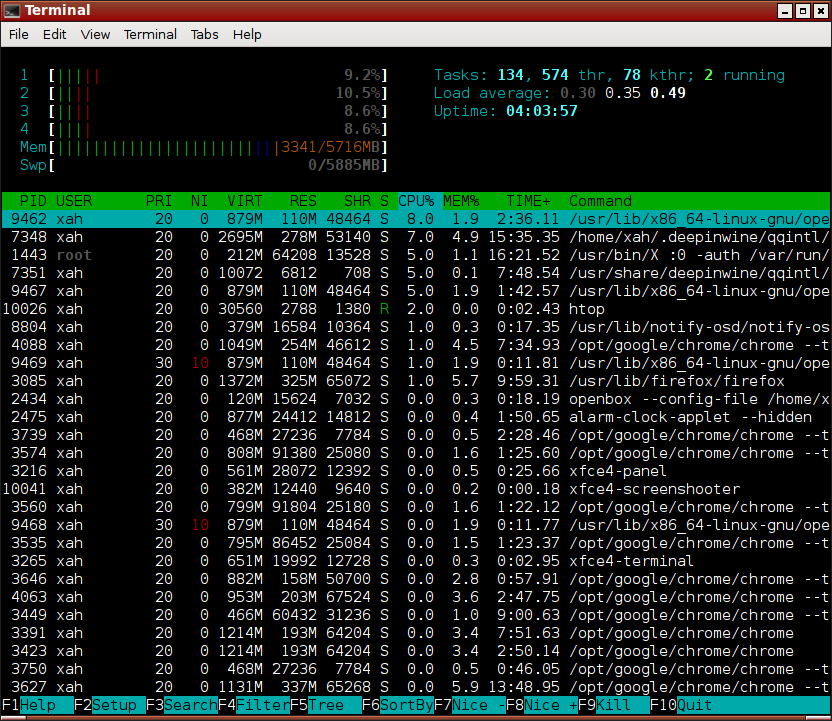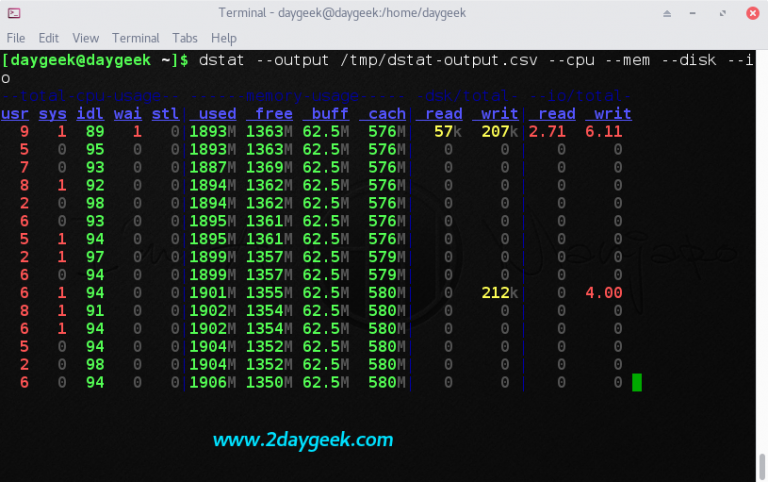

The CPU time that a task has used since it started. The states can be S for slee ping,ĭ for uninterrupted, R for running, T for stopped/traced, and Z for zombied.
#Linux process monitor tool code#
Total size of a task, including code and data, plus the stack space inĪmount of physical memory used by the task.Ĭurrent CPU state of a task. Table 3.2 explains the process fields in top.

Swap statistics, including total allocated swap space, available swap Nonkernel processes, memory in use, and memory that is shared and buffered. It is an outrageous value, such as 160%).Īll the memory statistics, such as total memory, available memory for The total can go over 100%, so do not be alarmed if this is the case (unless Time, including user, idle, and niced tasks. This measurement includes all processes on the system.Īn average percent of CPU time. Total number of processes running since the last time the top monitorĬhecked. How long the system has been running since the last time it was rebooted.

Table 3.1 explains the monitor fields in top. The following is the syntax for starting top: $ topĪn example of top output to a standard terminal screen. The top utility also provides an interactive mode for modifying process behavior. The top display is refreshed every 5 seconds by default, but it can be modified with the -s option for longer or shorter intervals. As its name might suggest, this tool displays the top CPU-intensive processes in close to real time. The top UtilityĪrguably one of the most popular tools for performance monitoring on Unix systems in general is the top utility. However, it is worth noting at this point that what you read here about these utilities might be different, depending on your Linux distribution. Unix provides many tools for the system administrator to monitor systems. Thanks for reading, if you have Top tools you would like me to add or amendments to this list, please leave a comment.Linux Performance Tuning and Capacity Planning Irqtop Top Database/Queue Monitoring Tools Kube-top Top IRQ and SoftIRQ Monitoring Tools

Slurmtopdefinitely exists, great tool but no official links seems to exist. Usbtop Top Distributed/Workload Manager Monitoring Tools Iptraf-ng Top Disk/storage monitoring tool Top …you know the original otherwise, you wouldn’t be here. So what are the Top tools out there? Top General Hardware/Process Monitoring (the all-rounders):
#Linux process monitor tool how to#
If you want to install any of the top tools below please google “ how to install in linux” or just try a “ sudo apt install ” for our apt-based users. Take a moment to star the repo and appreciate the people developing these tools. Here is a categorised list and links to their respective git repositories. It is important not to forget before you move onto centralised monitoring tools like Prometheus, Datadog, Elastic etc… these tools will be the precursor MVPs when you're on the spot developing.Īll these tools follow a Top naming convention and several have been developed, each with a unique look and utility. These are all built for use from the terminal and have been invaluable in our debugging endeavours. More specific ones have also been developed for monitoring containers, network, GPUs, as well as workload managers. Over the years several terminal-based tools have emerged for real-time monitoring of UNIX/Linux servers with respect to hardware related metrics such as Memory, CPU, Swap usage alongside process viewing and management.


 0 kommentar(er)
0 kommentar(er)
